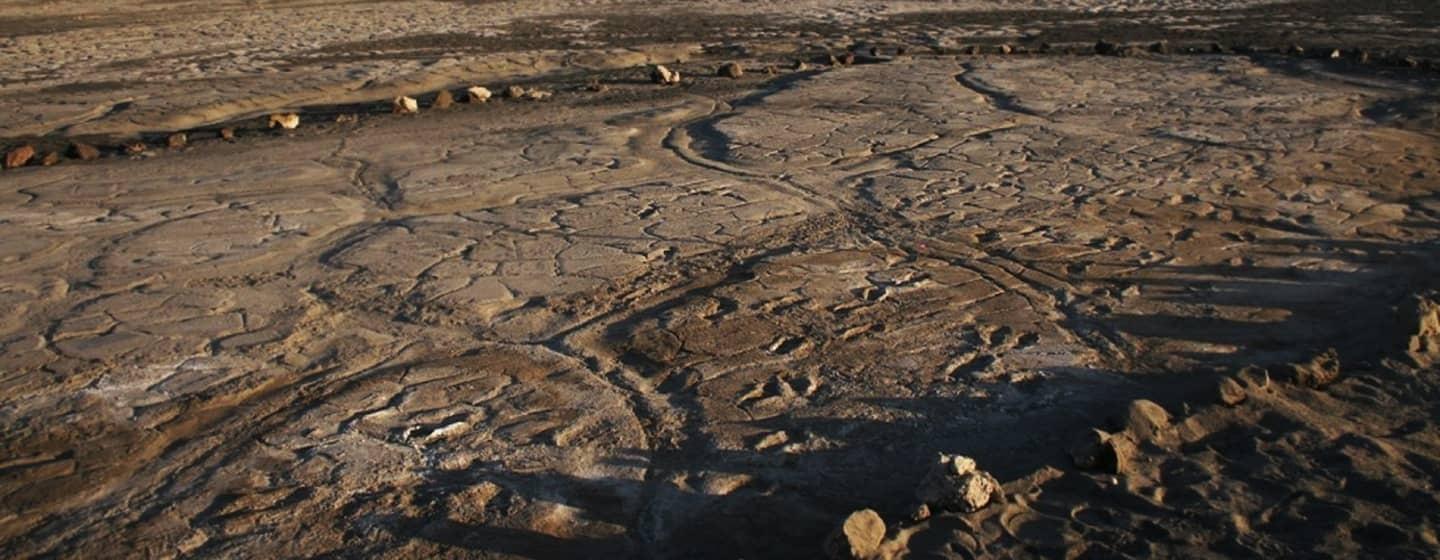Ancient Footprints Help Appalachian State Researcher Walk Back in Time


Chances are you don’t think much about the footsteps and footprints you leave behind. You are moving forward to experience the next adventure, meet the next challenge, or find the TV remote.
Whatever the circumstance, what’s behind is, well, behind us. It’s time to move on.
That’s probably what a group of people were thinking as they walked across the mudflats in Tanzania 19,100 and 5,760 years ago. They were walking nine miles north of a volcano called Ol Doinyo Lengai, which means “mountain of God.”
The roughly 400 footprints stretch for about 300 square meters and are the largest human fossil footprint site ever discovered in Africa, scientists announced in the journal Scientific Reports, published by Nature Research.
“These prints were pressed into wet ash, which dries almost like concrete,” said Cynthia Liutkus-Pierce, Professor of Geology and Director of the Environmental Science Program at Appalachian State University and a study co-author. “The resilience of the hardened ash helps preserve the details of the footprints despite the natural erosion of the surrounding area over thousands of years.”
Liutkus-Pierce led a team of researchers studying the footprints, which were found by a villager along the shores of Lake Natron.
The site is located in Engare Sero in northern Tanzania. While the prints were preserved in an ancient volcanic mudflow, the volcano is still active today.
Footprints are rare in the fossil world, and the prints provide, for the first time, a snapshot of group behavior in prehistoric humans.
One set of tracks reveals 17 people walking towards the southwest; 14 adult women, two adult men and one young male. According to the study, the females who made the tracks were foraging together and were visited or accompanied by the males. That suggests a female led foraging party, which is a division of labor based on sex used by some modern hunter gatherers.
“Being able to reconstruct the demographics of a group of ancient humans from tens of thousands of years ago — to be able to interpret what they were doing and who was in the group — is absolutely astounding to me,” adds Liutkus-Pierce.
In addition to the paper summarizing the group’s findings, a full 3-D re-creation of the site has been generated and made available online for study and download by the Smithsonian’s Digitization Program Office.